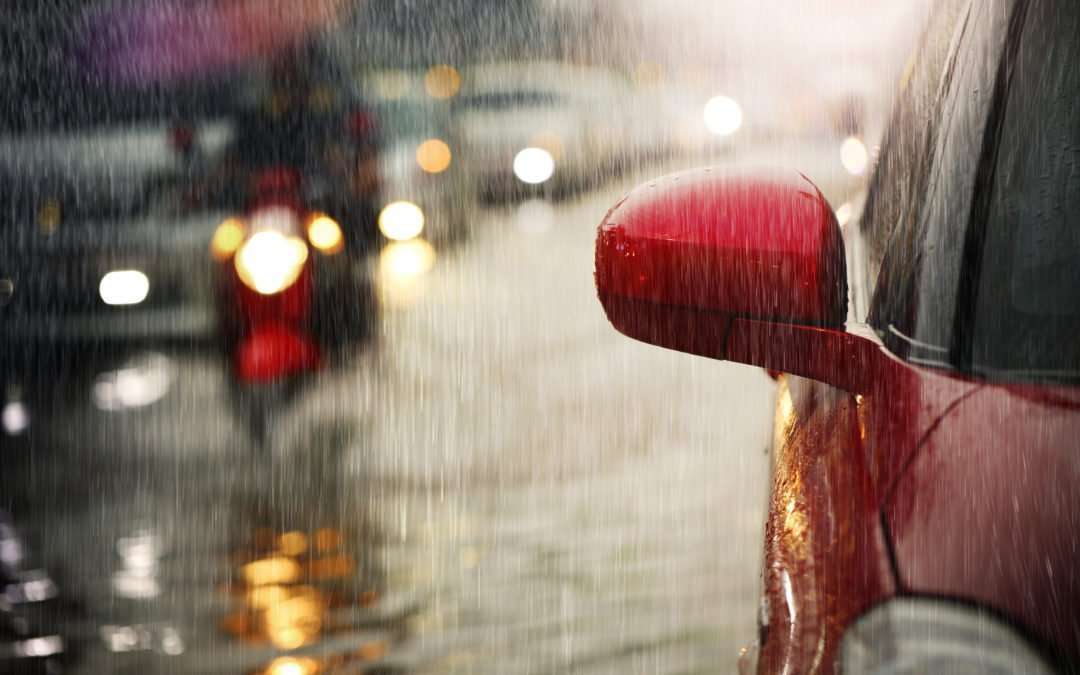Tips for Driving in the Rain
July 17th, 2019
Rain, Rain, Go Away! Superb Safety Tips for Driving During Summer Storms
Summers in Texas are a little warm, to say the least. But those summer thunderstorms can hit fast and unexpectedly. While rainy days can be a nice break from the heat, it can make driving a little more dangerous – especially around the Austin metro area.
Car accidents do happen and bad weather can increase your risk of getting involved in one. As we hit mid-summer, there’s certainly plenty of storms left that will come our way. That’s why learning how to best protect yourself right now can keep you from a world of hurt.
Let your Austin car accident attorney at Ramos James Law provide you with some valuable tips that can lower your chances of getting involved in an accident when driving in the rain.
9 Pointers to Prepare Yourself for Driving in the Rain
- Better safe than sorry. Slow down when driving in the rain.
Wet roads can be very dangerous, and if you are speeding, then it’s even riskier. During a heavy downpour, you should go even lower than the speed limit just to be safe.
Don’t let another driver force you to travel at speeds you are uncomfortable with either. If someone is honking at you, give them room to pass. Don’t risk your life just because someone is rushing you.
- Use your headlights during heavy rains.
In the State of Texas, headlights are legally required to be turned on if you are unable to see 1,000 feet ahead of you.
However, even if it’s only drizzling, it’s safer to turn your vehicle’s headlights on. Not only will you be able to see better but it also allows other drivers to see your vehicle better.
- Avoid sudden breaks.
Breaking suddenly in any situation can be dangerous. During a storm, however, roads become slippier. This means cars need additional time to come to a complete stop.
Avoid driving fast, slow down sooner by taking your foot off the accelerator earlier than you normally would, and step on the brake pedal gently. Be especially careful near intersections where car accidents tend to frequently happen.
- Protect yourself from hydroplaning.
Hydroplaning occurs when your tires lose friction because of water on the roadway. When this happens, your vehicle can be difficult to maneuver and control. Traveling at high speeds and over puddles of water increase the likelihood of hydroplaning.
If you start to hydroplane, take your foot off the gas pedal slowly, and steer straight until you gain control again. If your car starts to spin, turn your wheel in the direction that the vehicle is spinning, slowly. If you jerk the wheel sharply in one direction, you could flip your car.
- Do a quick check before heading out.
If you must head out during a storm, check your headlights, taillights, and windshield wipers to make sure that they are working properly. For longer trips, make sure to check your tire’s tread. Bald tires will greatly increase your chance of hydroplaning as they will not have sufficient grip on the road.
- Leave extra space between your car and the car in front of you.
Keep your distance from the car in front of you in case they make a sudden stop. This will ensure that you have enough space – and time – to maneuver accordingly.
- Turn off cruise control.
On rainy days, using cruise control can cause you to lose control of your vehicle. You might think it’ll help you stay at a steady speed, but if you hydroplane while you’re in cruise control, your car will go faster..
- There is nothing wrong with waiting.
If you feel uncomfortable driving in the rain, then just wait until the weather clears up. If you’re going on a longer trip, then consider waiting until the following day. There is no reason to put yourself in danger.
On the other hand, if you are already on the road and the weather takes a turn for the worse, pull over somewhere safe. Be patient until the storm passes.
- Watch out for foggy windows.
Rain will cause humidity levels to increase, which will likely cause your windows to fog up. Most cars have ventilation systems with a function that will help get rid of this type of fog. If your car doesn’t have this feature, pull over until you can see out your windows.
Many rain-related accidents are completely preventable, but it is necessary to drive safely when facing bad weather conditions. Unfortunately, there are also many negligent drivers who put others at risk with their terrible driving behaviors.



